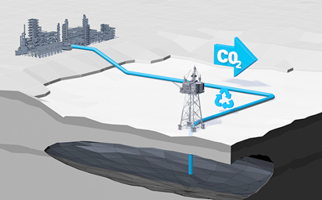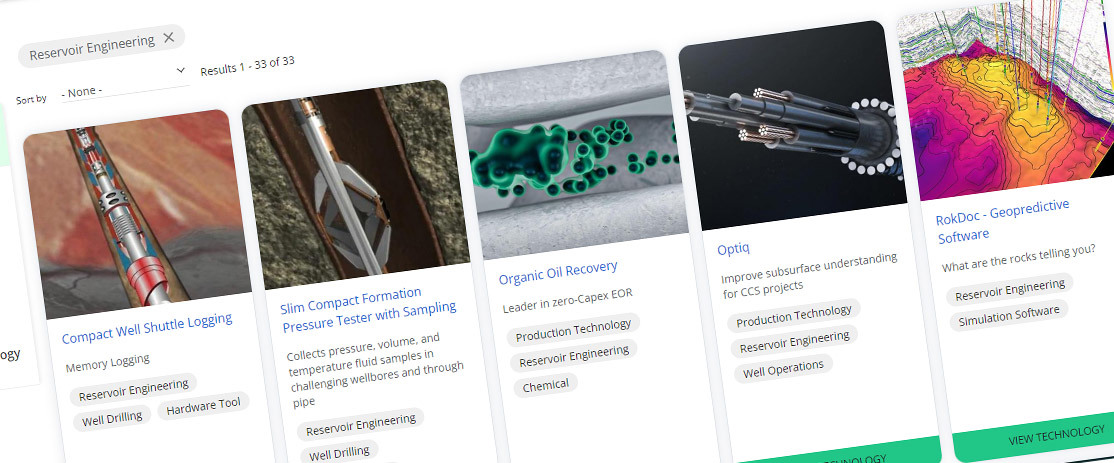Operators’ technology plans reflect industry priorities to reduce offshore greenhouse gas emissions.
With a number of large-scale carbon storage licences awarded, interest in carbon storage is growing rapidly and innovative technologies are being developed, including site characterisation, well and facility design, monitoring, measurement and verification of CO2 injection.
Reduction of flaring and venting emissions are targeted, for instance, through technologies able to recover flash gas and/or improve flare combustion efficiency.
Operators are actively reducing power generation emissions through more efficient equipment, alternative fuels, hybrid power systems, and replacing conventional power generation with renewable power from offshore windfarms or from shore.
2025 technology survey data is showing continued reporting of hydrogen production related technologies (three instances).
2025-Digital & Data by categoryNet zero technologies
In line with industry commitments to the North Sea Transition Deal to reduce greenhouse gas emissions, interest in technologies to address flaring and venting, energy efficiency, and low-carbon power has grown significantly.
Companies with the largest operational footprint in the UKCS show greatest interest, but in general there is a broad presence of these technologies in the reported plans (22 operators out of 46).
Net zero is defined in this document as a ‘cross-cutting’ category, where technologies are an integral part of the offshore asset lifecycle (chart below).
Technology solutions for net zero tended to be less proven than in other more mature categories, but in the latest survey over half (53%) are reported at first deployment or still under development.
Operators are getting more involved directly in the technology development cycle in this area either in-house or in partnership with vendors or the Net Zero Technology Centre (45%).
Readiness definitions: Early development (TRL 1-4), late development/pilot (TRL 5-7), early commercialisation (TRL 8), proven (TRL 9)
Flaring and venting monitoring and reduction technologies are showing an increased focus as operators align with achieving zero routine flaring, open reporting aligned with the principles of OGMP 2.0, and anticipating methane’s inclusion in UK ETS proving strong combined drivers. Liquid-ring compressors for flare gas recovery and online flare combustion efficiency measurement are two reported technologies. New this year are poison resistant pellistor catalytic gas sensors, a cloud-based emissions monitoring system to reduce emissions during wells activities, and cloud-based flare combustion efficiency modelling. Emerging technology includes leak grading with a proprietary miniaturised methane sensor.
- Catalytic gas sensor: Poison resistant pellistor (PRP) catalytic gas detector for fixed fire and gas detection system.
- TRL 9 commercially available (NEW)
- TRL 9 commercially available (NEW)
- Cloud-based emissions monitoring system: To reduce emissions during wells activities. Software helps operators reduce emissions by accurate monitoring against identifiable targets using cloud-based techniques. Real-time measurement of emissions versus baseline plan.
- TRL 9 commercially available (NEW)
- TRL 9 commercially available (NEW)
- Flare gas recovery: Proprietary self-contained flare gas recovery system.
- TRL 9 commercially available (NEW)
A flare gas recovery unit (FGRU) is a system that captures flare gases and redirects them back into production workflows for reuse as fuel gas. This process helps to reduce routine flaring and emissions.

- Flare combustion efficiency modelling: Cloud-based solution which calculates flare combustion efficiency using existing data (flare flow rates, gas composition, weather data, etc.,).
- TRL 9 commercially available (NEW)
- Plant performance optimisation: Enables optimised running parameters to reduce GHG emissions.
- TRL 9 commercially available
- TRL 9 commercially available
X-PAS™ is a digital solution for complex assets to predict threats, prevent system trips and reduce maintenance costs.
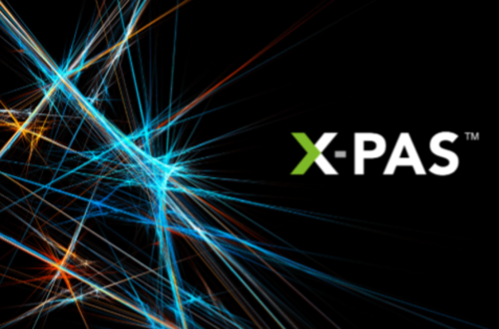
- Liquid-ring compressor: Can compress nearly all gases and vapours without any metallic parts contacting one another, used for flare gas recovery.
- TRL 9 commercially available
Liquid-ring compressor uses a liquid ring formed from the operating liquid, instead of a mechanical piston, as an energy carrier to compress gases and vapours. Liquid-ring compressors can compress nearly all gases and vapours without any metallic parts contacting one another.
Technology example link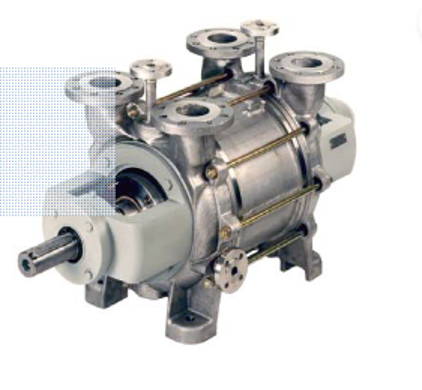
- Flare combustion efficiency measurement: An online, live measurement of combustion efficiency providing control feedback to improve the combustion efficiency of flaring operations and thereby reduce overall emission rates of CO2 and methane.
- TRL 8 early commercialisation
- Proprietary miniaturised methane sensor: Provides high resolution for leak grading. Paired with software suite and custom algorithms the self-contained and field-proven package offers localised, quantified emissions data.
- TRL 5-7 late development/pilot (NEW)
Net zero technologies targeting low carbon power/electrification are focused on substituting/reducing the dependency on the use of gas turbines and diesel generators for offshore power. This includes electrification from the onshore grid and/or from local floating offshore wind. Also reported are, hybrid power systems, topsides and subsea power packs for short-term energy storage, alternative low-carbon fuels for turbines/engines, wave energy for subsea power systems, energy pods, photovoltaics and fuel cell power generation. New this year are additional alternative fuel options.
- Photovoltaics: Solar power system. Power generated using photovoltaics arranged in arrays. Power output proportional to incident light intensity. Highly seasonal.
- TRL 9 commercially available
- TRL 9 commercially available
- Hybrid power system: Providing a low maintenance solar panel solution, providing power to the platform whilst charging batteries. Two small lean-burn diesel-engine driven generators provide energy in case the renewable system fails.
- TRL 9 commercially available
- TRL 9 commercially available
- Wave energy convertor (WEC) comprising WEC, subsea battery storage, subsea control system topside, subsea equipment, a residential hybrid autonomous underwater vehicle and a docking station.
- TRL 8 early commercialisation – three new operators reporting this year (NEW)
- TRL 8 early commercialisation – three new operators reporting this year (NEW)
- Alternative liquid fuels: Including hydrotreated vegetable oil, e-methanol and biodiesel.
- TRL 8 early commercialisation (NEW)
- TRL 8 early commercialisation (NEW)
- Transportable, autonomous energy container: Combining wind turbine, solar panels and battery storage for use on platforms in lighthouse mode.
- TRL 8 early commercialisation
With a unique combination of Amphibious Energy’s Nautilus Offshore Wind Turbine, vertical orientated solar photovoltaic panels, and battery storage integrated with the container, it directly competes with conventual transportable power generators.
Technology example link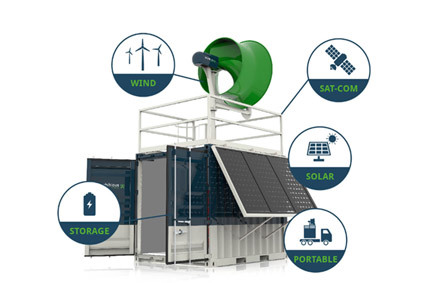
- Fuel cell power generation: Installation of 600kW fuel cell technology to produce electricity from imported gas with minimal emissions and high efficiency.
- TRL 8 early commercialisation
| Technology Example: | |
|---|---|
|
The R&D carried out by the EODev and Toyota teams has enabled the REXH2 to be perfectly adapted to the extreme conditions of the marine environment, reaching power levels of 70 kW per unit, up to megawatts when stacked. |
 |
- E-methanol: Generating low carbon fuel offshore in an economical way without impacting MAH.
- TRL 5-7 late development/pilot
- TRL 5-7 late development/pilot
- Battery storage: On-site battery system to provide additional power resilience.
- TRL 5-7 late development/pilot
- TRL 5-7 late development/pilot
- Alternative fuel: Deployment of green hydrogen equipment for site services.
- TRL 5- 7 late development/pilot
- TRL 5- 7 late development/pilot
- Low-carbon power solutions: Wind power solutions and grid connection.
- TRL 1-4 early development
Operators are maintaining focus on technologies that provide a cost-effective way of reducing emissions and reducing fuel consumption, both of which also boost gas available for export. Operators reported the use of turbine power management system obsolescence upgrades, an optimised power management and integrated operations centre, remote operations centres for survey by ASVs, a capacitive transfer system cable design requiring smaller cable diameters with reduced losses, and a remote operations project. New this year are re-wheeling of gas export compressors, use of aeroderivative gas turbines for more efficient power generation and combined cycle gas turbines for combined heat and power.
- Export gas compressors: Re-wheeled for improved efficiency.
- TRL 9 commercially available (NEW)
- TRL 9 commercially available (NEW)
- Power generation efficiency enhancement: By using aeroderivative gas turbine for power generation at 38% thermal efficiency rather than current 15-19%.
- TRL 9 commercially available (NEW)
- TRL 9 commercially available (NEW)
- Shutdown generator study: Use of smaller/more efficient power generators during annual shutdown periods.
- TRL 9 commercially available (NEW)
- TRL 9 commercially available (NEW)
- Turbine power management system obsolescence: Replaces existing, obsolete system to provide automatic synchronisation facility between main turbine generators as well as load sharing and load shedding functions.
- TRL 9 commercially available
- TRL 9 commercially available
- Optimised power management: Improves visibility through greater data handoff at high resolution for improved fault-finding and maximising efficiency.
- TRL 9 commercially available
- TRL 9 commercially available
- Integrated operations centre: Optimising the production and energy efficiency of the from visualisation portals allowing stakeholders to assess status and plans. A separate area is related to a dashboard visualising status.
- TRL 9 commercially available
- TRL 9 commercially available
- Optimising GT efficiency: To increase the efficiency of simple cycle GTs offshore driving compression and power generation.
- TRL 9 commercially available
- TRL 9 commercially available
- Combined cycle gas turbine: modification of existing gas turbine to add steam raising and combined heat and power capability.
- TRL 8 early commercialisation (NEW)
- Capacitive transfer system (CTS): New capacitive cable system design with aims to reduce cable power losses by 10% allowing for smaller cables with lower losses for same power capacity.
- TRL 5-7 late development/pilot
Capacitive Transfer System (CTS) is an innovative concept for power cable design leading to lower losses and facilitating more power delivery than equivalent legacy cable systems.
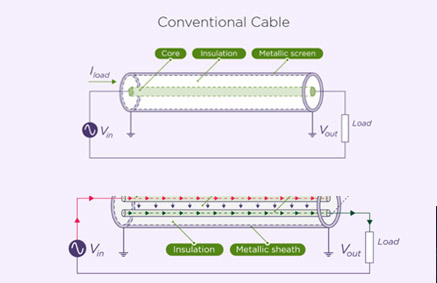
- Gas compression analytics: Use of data science methods to improve gas compression up time.
- TRL 5-7 late development/pilot
- TRL 5-7 late development/pilot
- Advancing remote operations: Remote operations to create safer, more efficient and lower carbon operations.
- TRL 1-4 early development
- TRL 1-4 early development
Multiple new projects at scale are emerging this year with a focus on CCS enabling technologies at all stages including transportation, well and tree design, subsurface assessments for reservoir containment, assessment of risks for storage in existing abandoned reservoirs and monitoring, measurement and verification of CO2 injection into depleted reservoirs seabed using 4D gravity monitoring, gas sequestration and seabed digital acoustic sensing. Emerging technology includes the assessment of impurity impact on CO2 streams, MMV assessments and subsurface CO2 storage assessment. New this year is a seismicity monitoring system design.
- Seismicity monitoring system design: Modelling of expected levels of seismicity and designing for potential future deployment to monitor carbon storage sites.
- TRL 9 commercially available (NEW)
- TRL 9 commercially available (NEW)
- Seabed 4D gravity monitoring: Undertaking modelling of seabed gravity sensing survey technology over carbon storage sites.
- TRL 9 commercially available
- TRL 9 commercially available
- In-line inspection for offshore pipeline repurposing: An offshore pipeline will be repurposed for CO2 transportation. Fracture and corrosion assessment has been completed but an in-line inspection using intelligent pigs will confirm assumptions and results from this assessment.
- TRL 9 commercially available
- TRL 9 commercially available
- CO2 injection well design: Cement sheath modelling. Initial flow assurance results have indicated cryogenic injection conditions for most of the wells’ design life. This technique looks at the impact of cold temperatures on the effectiveness of the annular cement sheath over the life of the well and post abandonment.
- TRL 9 commercially available
- SPARK: Gas sequestration project in partnership with NZTC and HWU.
- TRL 5-7 late development/pilot
- TRL 5-7 late development/pilot
- Seabed digital acoustic sensing (S-DAS): Modelling of S-DAS over carbon storage sites.
- TRL 5-7 late development/pilot
- TRL 5-7 late development/pilot
- Qualification testing for well elastomers: Existing elastomers are not qualified for anticipated low temperatures or for the CO2 and accompanying impurities expected in the stream captured from emitters. Lab testing and qualification activity will enable appropriate elastomer material selection for new CO2 injection wells.
- TRL 5-7 late development/pilot
- TRL 5-7 late development/pilot
- Subsurface CO2 storage assessment: Subsurface modelling, potentially incorporating new data acquisition and processing to allow modelling of CO2 injectivity, migration and containment to better understand the risks involved.
- TRL 5-7 late development/pilot
- TRL 5-7 late development/pilot
- Measurement, Monitoring and Verification (MMV) technology assessments: Preparation of MMV plans tailored to specific storage sites to enable achievement of required detectability thresholds for any given licence area. Assessment includes wide variety of available and emerging technologies.
- TRL 5-7 late development/pilot
- TRL 5-7 late development/pilot
- Impurity impact on CO2 stream: Presence of impurities in CO2 streams is not well understood in terms of the impurity impact on CO2 phase behaviour and temperature conditions and corrosivity.
- TRL 1-4 early development

